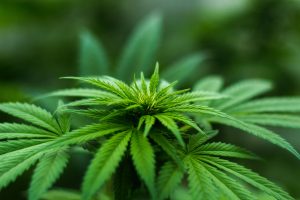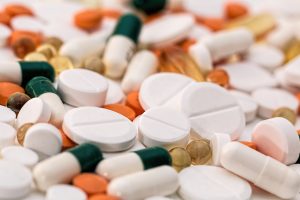
Opioid addiction is an epidemic raging through the United States, which is causing devastating effects. The Centers for Disease Control and Prevention reported that 52,000 deaths had been attributed in the US during 2015 alone, which makes drug overdose one of the leading cause of injury death in the country. It has become a large concern with many addicts starting on painkillers and moving to heroin when their prescription runs out.
Despite these dismal facts, it has recently been discovered that there may be a way out if this crisis: medical marijuana. According to a new study published in the Addiction journal, daily treatment that involves marijuana appears to help opioid addicts to recover from the drugs. From 1996 to 2016 Canadian scientists tracked opioid addicts to understand what factors kept them in addiction treatment.
Controversy
![]()
Medical marijuana is becoming popular treatment used for medical conditions and illnesses, including opioid addiction and methamphetamine abuse. Although not approved by the FDA, medical marijuana shows premise in helping opioid-addicted people reduce harm and withdrawal symptoms of opioid use.
Marijuana use in medical treatment is one of the most controversial forms of treatment today. Currently legal in 29 states, medical marijuana is now widely used to treat a number of different medical conditions and illnesses. Depending on the state, medical marijuana can be legally prescribed by a doctor and purchased in a dispensary, or even cultivated and grown at home.
Opioid addiction is one of the newest illnesses medical marijuana is used to threat. According to CNN, that is because cannabis as medicine is believed to help opioid addiction in one significant way – that is, by helping people reduce the number of opioids consumed.
To some, this method may seem counterproductive. After all, abstinence is an essential part of a part of addiction recovery. However, total abstinence is not always possible right away. Finding a way to help addicted individuals reduce the use of opioids to work on getting better is vital to recover success.
Medical marijuana may help people to reduce the use of opioids through a method called “harm reduction.” Essentially, this implies reducing the use of harmful opioids to lessen the risk of overdose and other dangerous consequences.
About Opioid Addiction
Opioids, also known as narcotics, are potent, pain-relieving drugs. This type of drugs includes both prescribed pain relievers such as Oxycodone and Fentanyl and the illicit drug heroin. Opioids work in your brain by attaching to opioid receptors and altering the way your brain responds to both pain and pleasure. When opioids enter the body, you experience an immediate rush in the first few minutes, and pleasurable feelings of euphoria, relaxation, and calm.

Following the rush, the person is likely to experience a feeling of being “high,” within 30 minutes up to a few hours. During the high, the person experiences a number of side effects. Uncomfortable withdrawal symptoms are what keep people stuck in opioid addiction.
Perhaps one of the most dangerous factors about opioids is the strongly addictive properties of the drugs. Most prescribed opioids are intended to use only for a few days, yet abuse can occur within that time. Addiction is not far off with opioid abuse and can happen after just a few uses because of how the drugs alter the human brain.
Continuous drug use can cause tolerance to the drugs, or inability to feel the effects of them. If you no longer feel the effects of opioids and have already formed an addiction to them, you may begin taking more of the drugs or taking them in higher frequency. This pattern increases your risk of overdose.
The goal of opioid addiction treatment should always be to reduce or cease use of the drugs and make the patient as comfortable as possible. Several methods are proven effective at this, and medical marijuana may be one of them.
Side Effects And Withdrawal

Abuse of opioids comes with a whole host of horrible side effects. These may include the following:
- Chronic constipation
- Nausea
- Extreme cravings
- Increased sensitivity to pain
- Increased sweating
- Reduced pupil size
- Reduced sex drive
- Shallow breathing
- Slurred speech
One of the most uncomfortable side effects of opioid abuse is withdrawal symptoms. For someone who has been abusing opioids for an extended period of time, and begun to develop a physical dependence on them, the person may begin to feel physical symptoms when not taking the drugs.
Withdrawal symptoms are rarely life-threatening, according to the U.S. National Library Of Medicine. It is when you feel these symptoms but already have a tolerance that opioid addiction can be dangerous. Withdrawal can push you to keep taking opioids, especially if you aren’t feeling the effects anymore.
The following are possible withdrawal symptoms
- Aching muscles
- Anxiety or agitation
- Diarrhea
- Goosebumps
- Increased tearing
- Pupil dilation
- A runny nose
- Stomach cramps, vomiting or nausea
- Sweating or yawning
- Insomnia
- Withdrawal symptoms may occur anywhere from 12 hours of last opioid use, up to several days after abuse. Usually, dependence keeps people going back to opioid abuse, while withdrawal symptoms ensure they will probably stay there until they get help.
Just as the amount of time to become dependent on opioids differs from person to person, so does the amount of time and method by which to recover. What might work for one person might not be as effective for another, which is why variation in treatment methods is so important.
How Does Medical Marijuana Treat Opioid Addiction?
How would cannabis treat opioid addiction? Marijuana contains cannabinoids or chemicals that make it
a mind-altering drug. These include THS (delta-9-tetrahydrocannabinol) and many others.
Just like other drugs, some of these cannabinoids, which have been produced in labs, can be harmful when misused. However, growing evidence, including research from the National Institute on Drug Abuse (NIDA) suggests that cannabis can be useful in treating certain illnesses and conditions.

Finding the Right Rehab Center
Because marijuana is not legalized in all the states, there are not many rehab centers that use cannabis as a drug treatment.
The recent passing of the adult use act in California means all adults are eligible for cannabis use. Cannabis has many medical purposes that can aid in meeting recovery goals. It helps with sleep, pain, trauma, the discomfort of withdrawal and craving, and many other ailments. Many people use cannabis for relaxation the same way millions of people have a glass of wine. With no lethal dose and no interactions with other medications, cannabis has the potential to eliminate self-harm from drug use as well as treat medical conditions. Some of the benefits can be derived from non-intoxicating CBD.
One Trackback
[…] to the controversy, a report from Boston University suggests that cannabis-assisted detox might help reduce opioid consumption. This method, while […]